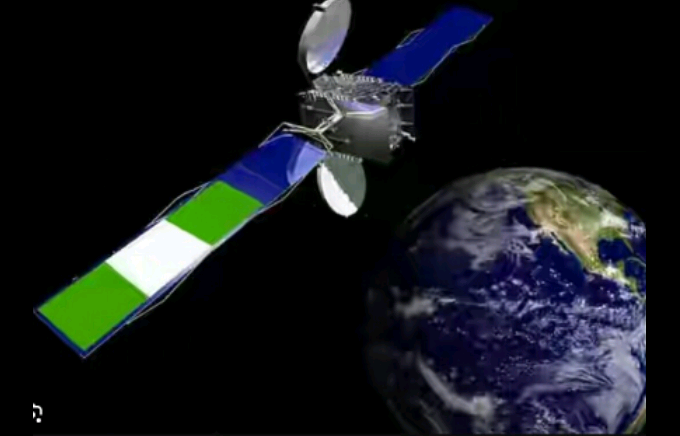Nigeria’s space ambitions could accurately be described as work in progress – moderately laudable, but only by those aware of the happenings. Much of the country’s space research and technology initiatives have been carefully kept away from the discerning public. But what are the roles of Nigeria in global space operations, if any at all? And what efforts are being committed to promoting and leveraging on Nigeria’s space ambitions for the benefit of the country?
Surprisingly, very first satellite station owned by the National Aeronautics and Space Administration (NASA) was built in Nigeria in 1961. Named the NASA Tracking Station 5, it was situated in Kano in 1961 – created to monitor NASA’s Gemini and Apollo space missions. However, the space station was shut down in 1963 ever before either missions were concluded; Gemini mission in 1966, and Apollo mission in 1972 respectively.
Contributions of Nigeria to Global Space Operations
It might appear that Nigeria has failed to contribute something useful to global space research and operations. Nor are Nigeria’s space ambitions significant in any way. And perhaps the country derives little benefit from space operations. In spite of limited information in that space, events point to the contrary.
Nigeria currently owns and operates a number of space satellites. Notable amongst them is NigeriaSat-1, which was built by Surrey Satellite Technology Limited (SSTL) of UK in 2003. NigeriaSat-1 was a member of the Disaster Monitoring Constellation up until 2014, when it was decommissioned.
NigeriaSat-1 was the first satellite to transmit images of the US East Coast, following the shocking hit of Hurricane Katrina in August 2005. The terrible storm affected cities along the Louisiana-Mississippi border in New Orleans. It equally provided useful images to aid workers, following the Asian Tsunami of 2004. The latter disaster affected countries such as India, Indonesia, and Thailand.
Besides these, the NigeriaSat-1 was used to generate satellite imagery of the Amazon, and coastal areas of Vietnam. It also returned valuable images during floods that occurred in Uruguay, Paraguay, Argentina, and West Africa before it was decommissioned.
Furthermore, Nigeria’s space ambitions were unveiled at the ECOWAS meeting held in Addis Ababa 1976. However, the country was only able to set up its space agency 23 years later.
About the Nigerian Space Policy
The Nigerian Space Policy (NSP) was a 10-chapter document established in 2000 to pursue objectives that would benefit the country in its pursuit of space research and technology. It comprises short-term, medium-term, and long-term plans that would culminate in public-private partnerships, though the government would fund space technology development at the onset. Key national goals targeted by the NSP include poverty alleviation, disaster prediction, law enforcement and defence, earth monitoring, setting up of research centers, and fostering international cooperation.
The following targets were benchmarked by the NSP:
– NigeriaSat-1 to be launched by 2002
– Nigerian engineers to be trained to build earth observation (EO) satellites abroad by 2006
– Two new satellites to be launched by 2011
– Nigerian astronauts to be trained by 2015
– Synthetic Aperture Radar to be set up by 2015
– Made in Nigeria Satellites to be built by 2018
– Rocketry/Propulsion Systems to be developed by 2025
– Development of Spin-Off of Allied Industries (such as Electronics, Software, and more) by 2028
– Large-Scale Commercialisation of Space Technology & Know-how to be established by 2030
And to this end, the National Space Research and Development Agency (NASRDA) was set up in 1999 to pursue Nigeria’s space ambitions. Following this, the Nigerian Communications Satellite (NIGCOMSAT) Limited was set up in 2006 to operate Nigeria’s communication satellites.
Furthermore, GeoApps Plus Limited (a subsidiary of NIGCOMSAT) was mandated to sell the satellite images generated by Nigeria’s earth observation satellites. In addition, GeoApps handles the training of government ministries, departments, agencies, and the military in Geographic Information System, Remote Sensing, and other technologies.
Implementing the Nigerian Space Policy: The Achievements of NARSDA So Far
So far, NASRDA has succeeded in training Nigerian engineers to building Earth orbit satellites. They include the NigeriaSat-X and Nigeria-Sat-2. Also, the EduSat-1 was built and launched in 2017 (though it was decommissioned in 2019). EduSat-1 was a collaborative project between the Federal University of Technology, Akure and NASRDA).
Nigeria also built a communication satellite, the NigComSat-1R in 2011 with a 15-year life span. It is observed that Nigeria’s communication satellites contribute just 0.2% to the nation’s internet connectivity, but it is better than nothing.
It is noteworthy that no Nigerian astronaut has been sent to space till date. However, the Centre for Space Transport and Propulsion (CSTP) in Epe, Lagos State, has accomplished three experimental rocket launches.
Yet again, NARSDA was able to obtain a 10-metre digital elevation simulation map and vegetation density map of Sambisa Forest from its satellite, the NigeriaSat-X. This is in a bid to assist the Nigerian military forces to fight insurgency. NARSDA is also contributing to the medical, transportation, agriculture, and environmental management sectors in Nigeria and other countries through its satellites.
Suggestions to Strengthen Nigeria’s Space Ambitions
From the foregoing, Nigeria’s space research and development initiatives have succeeded to an extent. But there is still much ground to cover.
Experts suggest that Nigeria needs to invest more in STEM (Science, Technology, Engineering and Mathematics) courses. This would help to train local experts, so that they can build and sustain space research projects.
Kwara State University and Lagos State University, Ojo, are the only Nigerian universities that offer Aerospace and Aeronautical Engineering courses. And curiously enough, all the seven NASRDA research centres are located in Nigerian universities. But we could learn from India, which embarked on that trajectory since 2013. India currently makes use of its local talents and infrastructure to pursue its space ambitions, with some degree of success.
Yet again, Nigeria’s space projects needs more dedicated funding, seeing that space research is capital-intensive. And furthermore, the government’s long-term plan of introducing public-private partnerships with private investors and universities should be vigorously pursued.








